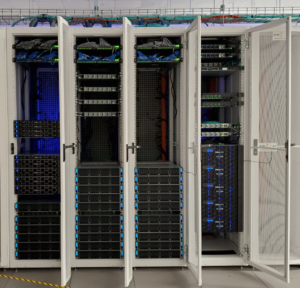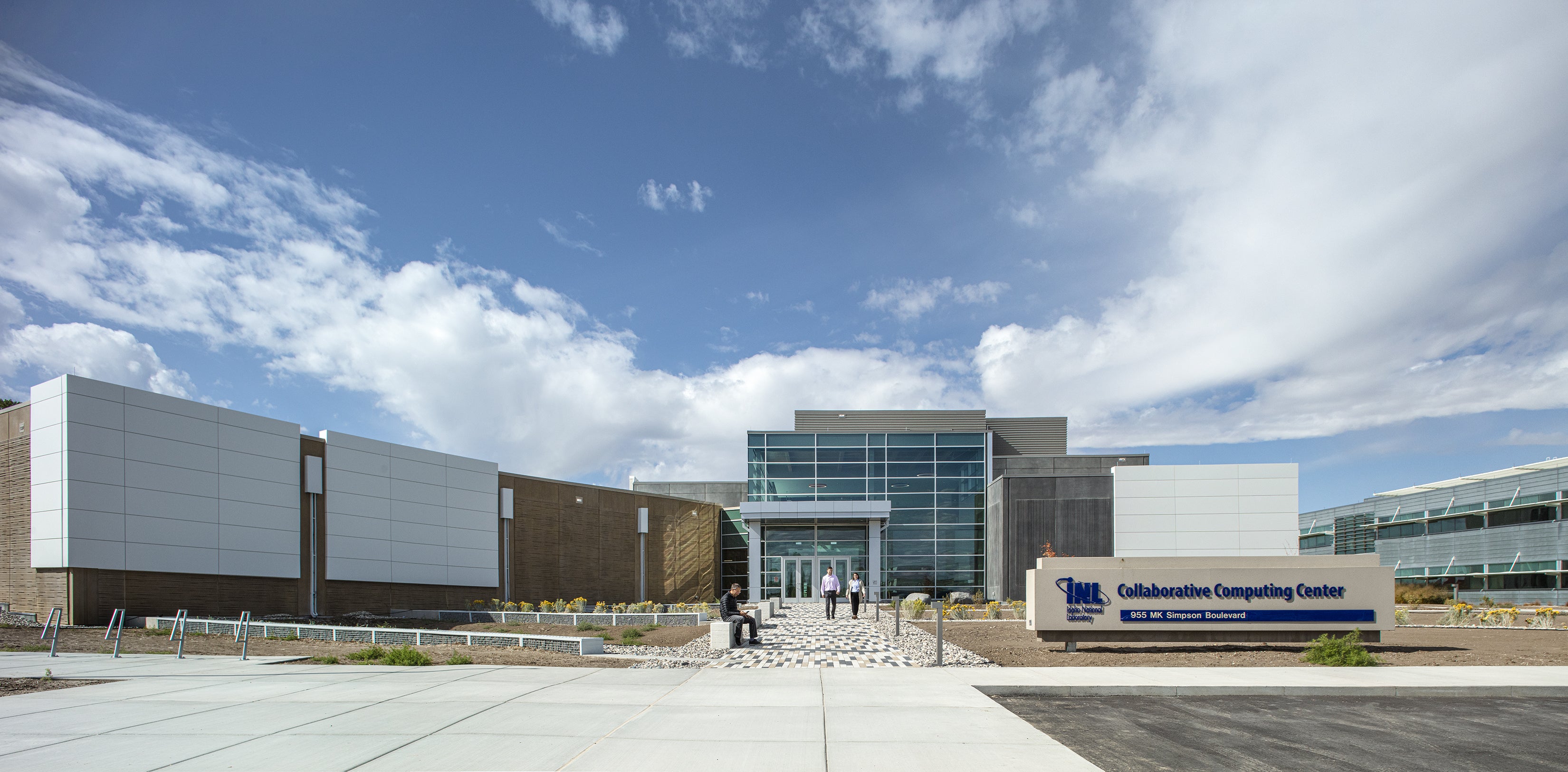by Forrest Burt

Boise State University’s Research Computing Department is excited to announce the official rollout of the Borah compute cluster. Located at the Idaho National Laboratory’s Collaborative Computing Center (C3) and built through a partnership between Boise State, the Idaho National Laboratory (INL), and Idaho Power (IPC) (see Update article here), Borah is much more powerful than Boise State’s existing high performance computing (HPC) architecture and will support the growing compute-intensive research and education mission at the university.
Borah is the third centrally-shared cluster Boise State has purchased, and demonstrates a continued commitment by the university to advancing the campus community’s research and computing capabilities and to developing beneficial partnerships between the university and other major public and private sector Idaho organizations.
“One of the coolest things about Borah is the level of collaboration. Within Boise State, the Office of Research, OIT, Academic Affairs, Finance and Administration, and all of the colleges played a huge part in making this happen. Then you add the community collaboration, including Idaho National Laboratory, Idaho Power, IRON, and the National Center for Atmospheric Research. Borah is a phenomenal collaborative effort where all of us benefit,” said Max Davis-Johnson, Boise State’s Chief Information Officer.
Borah has 40 compute nodes available to Boise State researchers, with four GPU nodes and one high-memory compute node. Each node has 48 cores, an improvement on the 28 in R2’s compute nodes. This gives Borah, including Idaho Power’s investment, a maximum theoretical computing output of 391.2 teraFLOPS, which is a measure of the speed of a computer in operations per second, especially arithmetic operations involving floating-point numbers. This translates into Borah being approximately three times faster than R2, which will result in reduced wait times, faster computing runs, and more resources overall for Boise State researchers.
“The new Borah computing cluster will enable Boise State faculty and researchers to model and simulate important scientific phenomena at resolutions that they were previously unable to accomplish at Boise State. This means that Boise faculty can study issues of importance to Idaho with more detail and accuracy than ever before,” says Steve Cutchin, faculty director of Research Computing and Computer Science associate professor.
Idaho Power will also utilize the new cluster for weather modelling and forecasting with support from Boise State researchers. The publicly available data generated from these forecasts will not only help Idaho Power, but will be both a source of data for campus researchers and a benefit to the state as a whole in improving the daily delivery of electricity to the citizens of Idaho.

“Modeling environmental phenomenon, including weather, will enable Idaho to plan for the continued pressures from our changing climate,” says Cutchin.
Additionally, as part of the sponsored Collaborative HPC Program with Idaho Power, a portion of IPC’s compute nodes in Borah will be allotted to Boise State when they’re not in use by IPC researchers, increasing the computing capacity available to campus by up to 50%.
The cluster will be housed at the INL’s C3, a facility in Idaho Falls that links Idaho’s government offices, universities, high schools, and other entities together with a high speed fiber-optic interconnect called the Idaho Regional Optical Network (IRON). C3 was designed to enhance collaboration between INL researchers, students and faculty at Idaho’s higher education institutions, and industry partners like Idaho Power.
Boise State’s current compute cluster, R2, will run in parallel to Borah and will prioritize classroom use for compute intensive coursework until its planned retirement in Sept. 2023.
Already an R2 user and interested in the details? Here are some important links:
- System Specifications: High Performance Computing
- R2 vs. Borah “At a Glance”
Email researchcomputing@boisestate.edu to get an account or to learn how to use the cluster.
About Research Computing
Research Computing provides compute, storage, software, programming, and network solutions to help researchers do more of what they love—research! We collaborate with researchers across campus to troubleshoot and streamline their compute workflow; software; programming; and data wrangling, sharing, and storage challenges. Not sure if Research Computing services will help your research? Email us to schedule a one-on-one consultation to talk and read more about our services here: Service and Support.